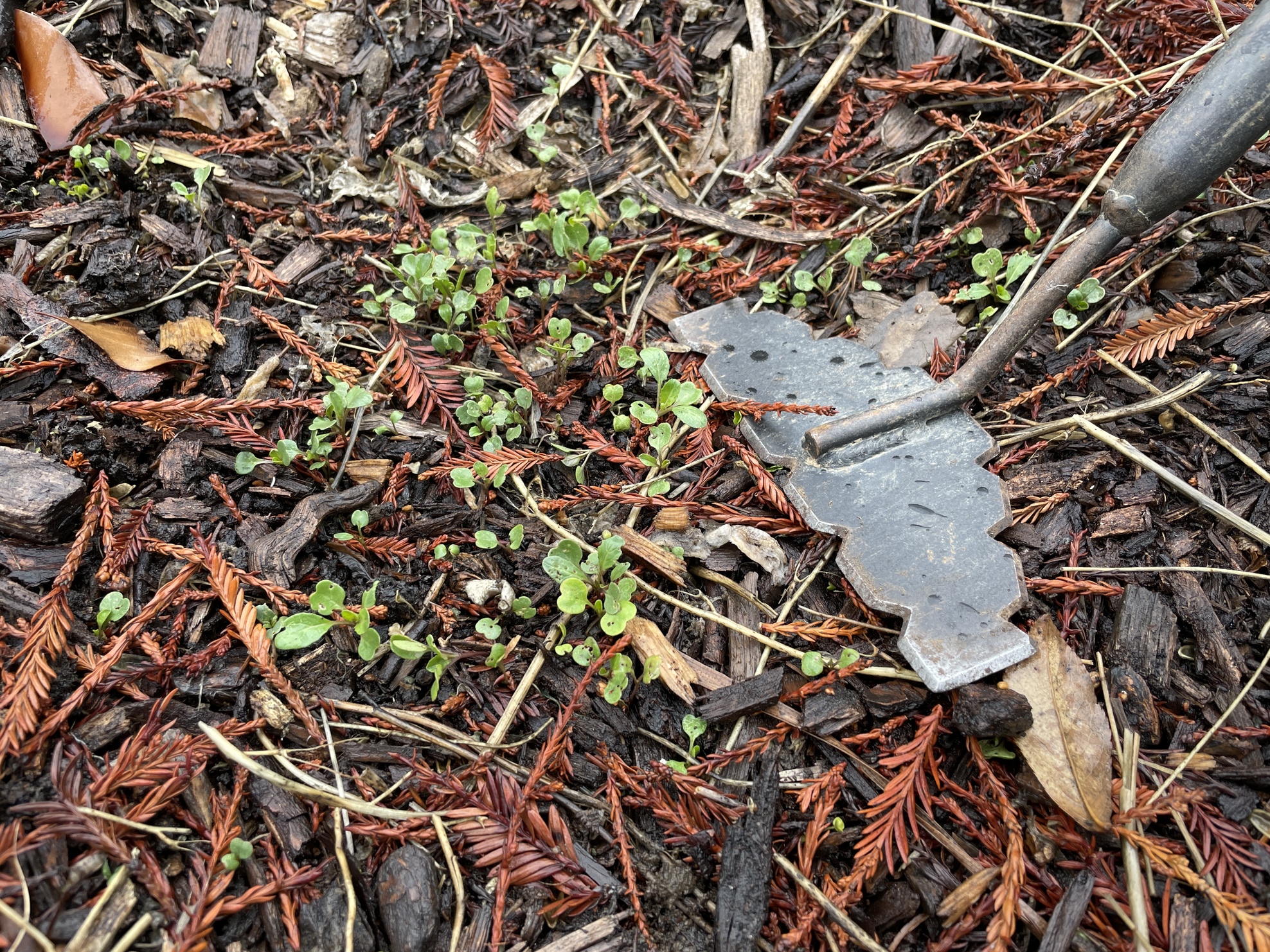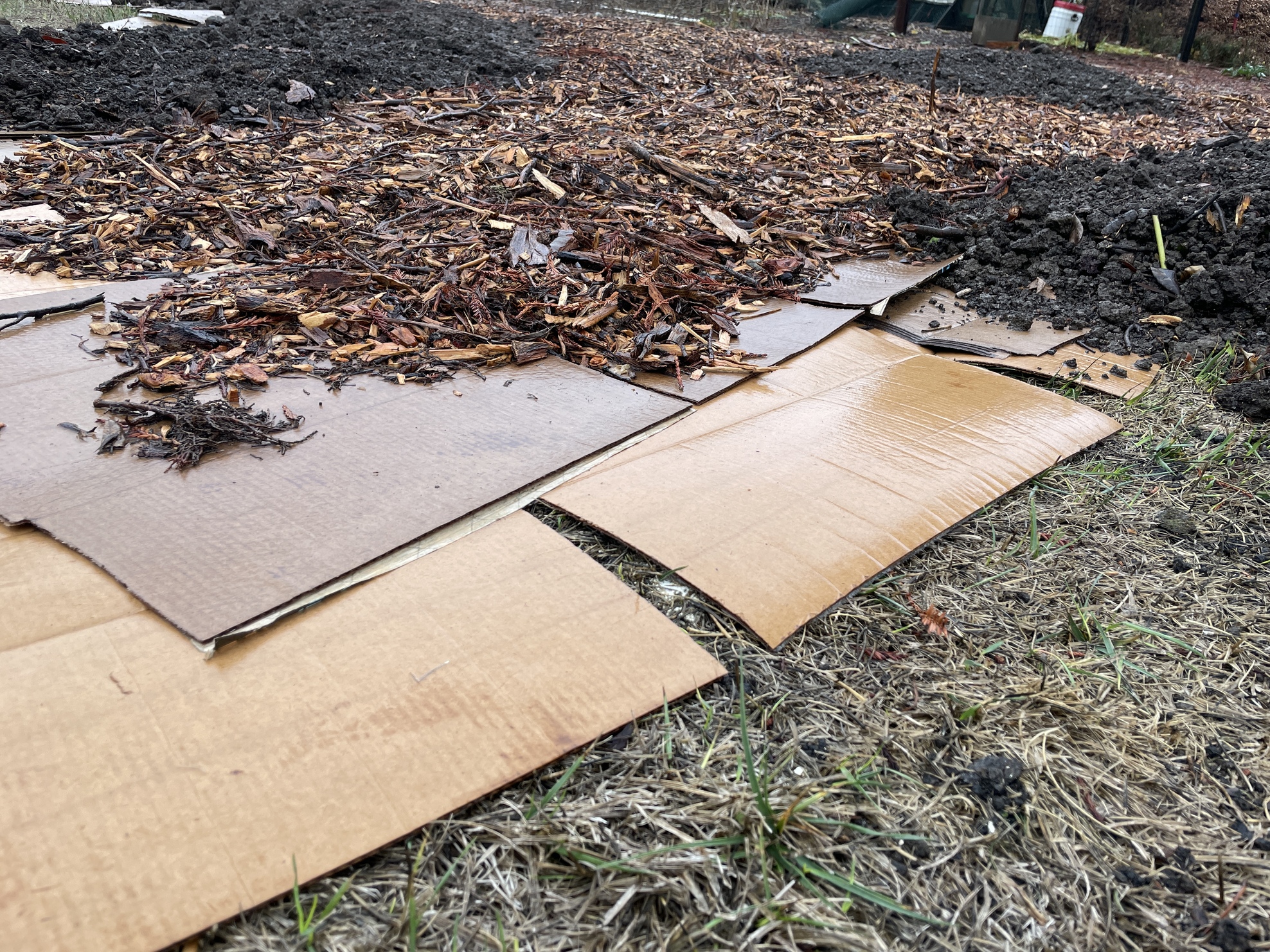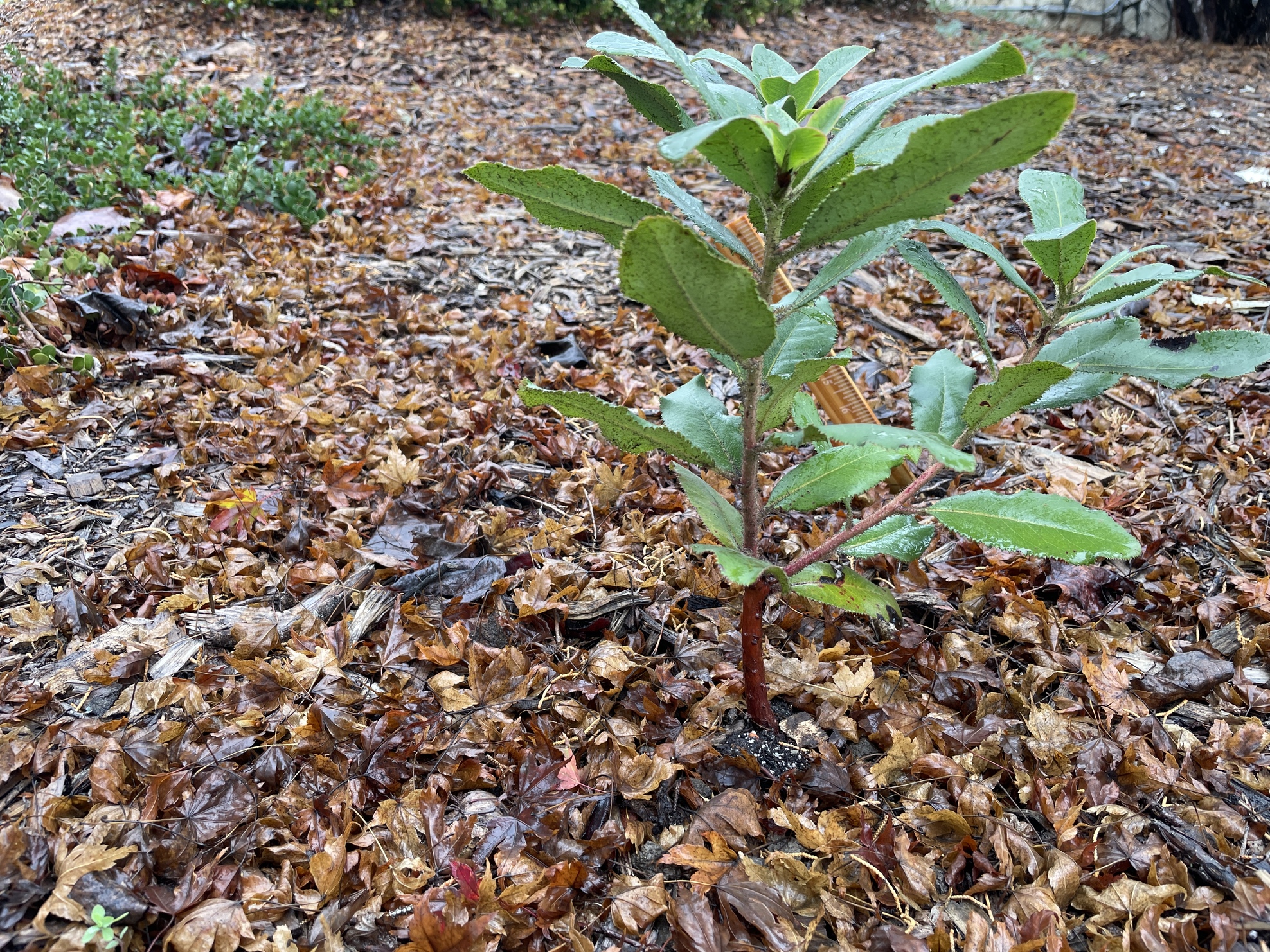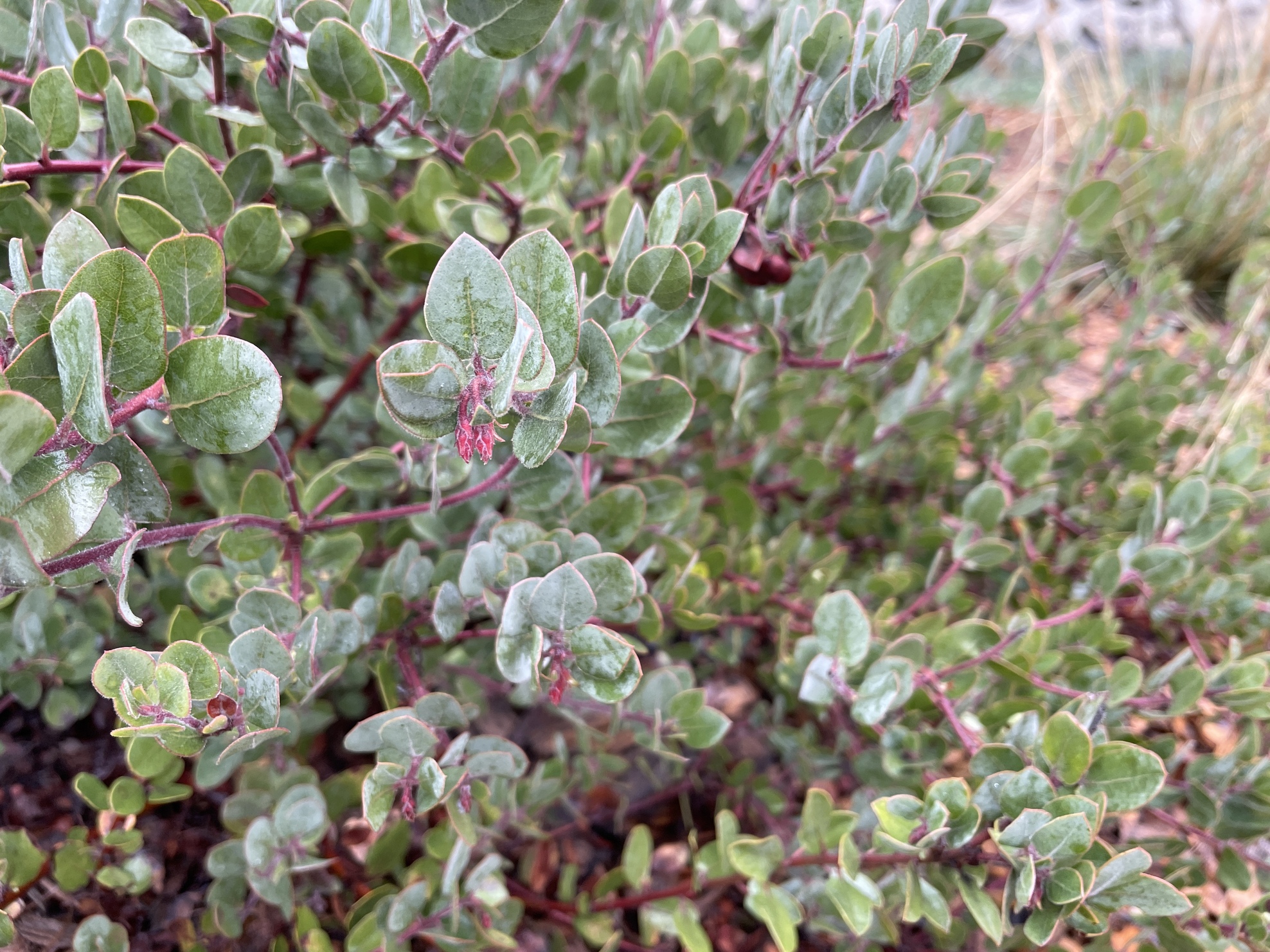By Jon Nord Kanagy
A great transition is afoot in our gardens as frosts prompt many species to drop their leaves, and moisture from the recent rains cause other plants to grow and allow seeds to germinate. It continues to be a great time to install new plants, and it’s the perfect time for some important garden maintenance.
Many weed species in our Northern California gardens are happy to grow through our relatively mild winters, and eagerly germinate with the first rains of fall. Controlling this flush of weeds now and throughout the winter will make for light work in spring and summer. If weeds are allowed to grow until spring, they’ll likely set seeds before they’re killed, allowing the soil “seed bank” to be replenished for lots of weeds again next year. Break that cycle by controlling weeds now while they’re young and relatively easy to remove.

The younger the weed, the easier it is to uproot. Weed control in the fall and winter will reduce springtime weeding tasks tremendously.
Weeds can be removed with all sorts of tools: from hoes, shovels, to hand-held weeders. Take care that weeds that have been uprooted aren’t able to reroot during periods of cool, damp weather. When a larger swath of the landscape is weedy, consider mulching to smother them. Sheet mulching is a technique that employs sheets of cardboard to cover weeds, which is then topped by a few inches of wood chips. This method also works well for killing a lawn as part of a transition to a more climate appropriate landscape. We don’t recommend using weed fabrics or sheets of plastic, as this results in poor soil health and can be a real headache after a year or two as the fabric becomes perforated and exposed at the surface. Mulches of wood chips can be used in most of the landscape but are not recommended within five feet of homes and other structures due to fire risks. Wood mulches are excellent around planting areas more than five feet from the home, but the planting areas should be interrupted by gravel pathways or other non-flammable materials. Wood mulches should also be avoided against wood fences and the trunks of trees.

Sheet mulching, used here to kill a lawn, is a great way to smother weeds.
Mulches of wood chips, besides smothering weeds, will slowly decompose to feed soil organisms, contributing to an active, spongy soil that absorbs moisture and is perfect for growing healthy plants. In most natural ecosystems, the soil is always covered with organic matter as plants in the wild create their own mulch with the leaves they drop. Not only does leaf litter protect soil from erosion and feed soil microorganisms, it also allows for nutrient recycling and provides habitat for bugs and small vertebrates. In our home landscapes we should try to keep fall leaves out of the landfill and contributing to our gardens by allowing leaf litter to accumulate in the winter and spring months. To reduce fire risks, any leaves that remain by summertime should be minimized within 30 feet of the house, and organic debris should always be cleaned away from the foundation of the house. Excess leaves can be composted with kitchen scraps and other garden debris to make a fine organic fertilizer.

Leaf litter will help this young madrone tree to become established in the garden.
Fall and winter have long been considered the best time for pruning many trees and shrubs. While that’s generally true, I have been experimenting in recent years with doing most of my fruit tree pruning in the summer months. This has several benefits. I’ve suffered the loss of many stone fruit trees, particularly peaches, to bacterial canker diseases that are easy to infect pruning cuts during wet weather. Summer pruning not only prevents this disease, it also makes controlling tree size much easier as less energy is returned to the root system in the fall when there is less of a canopy during the growing season. The recommendation I follow is to cut the new growth of fruit trees back by one half around Memorial Day, then again around Labor Day. This practice works well for peach, apricot, plum, cherry, apple, and pear, at least.
There are many plants in my California native landscape that benefit from winter pruning. Any spent flowers that remain from summer can be deadheaded, and perennials such as our native milkweeds that die down to the ground each fall can be cut back to the soil level. I also prune back California fuchsia to the ground once flowering has stopped late in the fall. This annual clean up removes woody shoots and plant debris, promoting vigorous spring growth and a huge late summer display of flowers for the hummingbirds. Sub-shrubs (perennials that develop a woody base) such as coyote mint, California buckwheat, and many sages also benefit from a heavy pruning every year or two in the winter to rejuvenate the plant and reduce woodiness. Native perennial grasses that are cool season growers such as purple needlegrass and California fescue can be cut down just after the first fall rains, as they’ll soon begin their season of active growth. Other grasses like deergrass and blue grama grass won’t begin new growth until spring, so pruning can be delayed until late winter.

Manzanitas will soon be in bloom and are best pruned in the summer months if needed.
A couple of very popular native shrubs, the manzanitas and California lilacs (Ceanothus), are best pruned only minimally, and during the dry summer months. Serious disease is more likely spread when these species are pruned in the winter.
If you need help with native plants garden planning, Sonoma Ecology Center offers landscape design as a fee-for-service program. Our firewise designs apply habitat and water conservation principles, using native plants, customized to your property, to reach sustainability goals. Contact Design and Implementation Project Manager Jon Nord Kanagy at jonk@sonomaecologycenter.org for more information.
